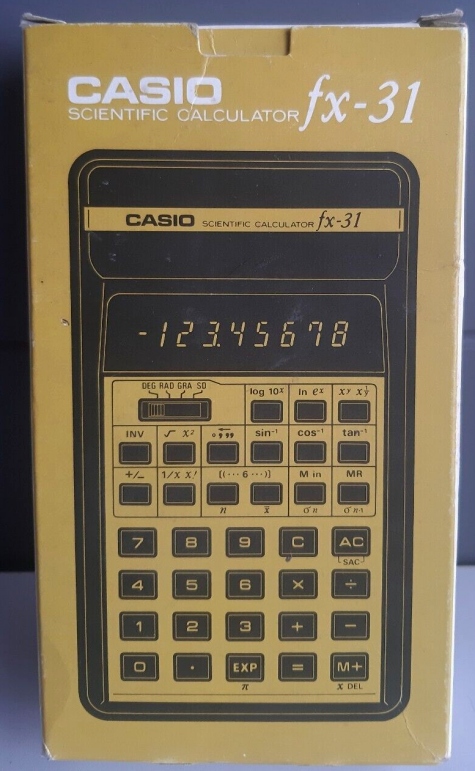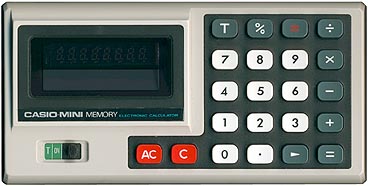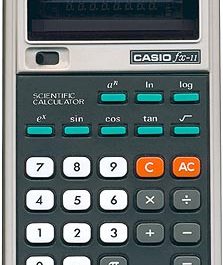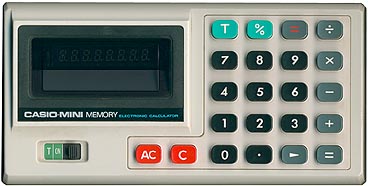
The Casio FX-31 was an early scientific calculator released by Casio Computer Co. Ltd. in 1978. This calculator had a sleek design with a white plastic base and dark blue plastic top. The model featured an 8-digit vacuum fluorescent display, allowing calculations up to 10 digits of precision.

Some key features of the FX-31 included:
- Four standard arithmetic functions (addition, subtraction, multiplication, division)
- Square root and square calculations
- Reciprocal and factorial functions
- Trigonometric functions
- Statistical calculations (mean, standard deviation)
- Logarithmic and exponential functions
- Degree/minute/second conversions and display
- Pi constant
- 6 levels of parenthesis
- 3-register memory

The calculator used a Hitachi HD38111A processor and was powered by two AA batteries or an optional AC adapter. It measured approximately 84mm x 145mm x 24.6mm and weighed 132g without batteries.
Logic and Usage
- The “C” key clears the current number entry, while the “AC” key clears everything and returns to ready state.
- Overflow is suppressed – entering more than 8 digits is ignored.
- Negative numbers display with a “-” symbol in the 9th digit position.
- Errors display “E” in the rightmost digit and are not recoverable.
- Constant functions are invoked by double pressing an operator key.
- Parenthesis and function limits display “C” when exceeded.
- Degree/minute/second entries display in decimal form. DMS view enabled by pressing “INV” and “<” keys.
- Some advanced functions require “INV” key.
- Full 10-digit precision is maintained internally.
- No major logic bugs or issues found.

Overall, the Casio FX-31 was an early pioneer in handheld scientific calculators. It combined useful functions with robust build quality and logical operation. The large display and intuitive layout made the FX-31 quite popular during its time.


